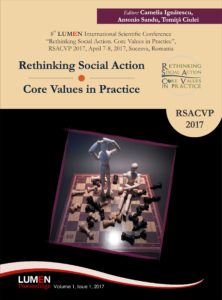Systematic Review and Meta-analysis of Vagus Nerve Stimulation in the Treatment of Heart Failure
Systematic Review and Meta-analysis of Vagus Nerve Stimulation in the Treatment of Heart Failure
Author(s): Cristina Furnica, Raluca Ozana Christol, Mihaela Grecu, Mihaela Tomaziu-Todosia, Grigore Tinica
Subject(s): Essay|Book Review |Scientific Life
Published by: Editura Lumen, Asociatia Lumen
Keywords: atrial fibrillation; heart failure; vagus nerve stimulation; NYHA class.
Summary/Abstract: The vagus nerve, the longest cranial nerve, mixed, with both motor and sensitive components, innervates the structures derived from the last two pharyngeal arches and constitutes the main efference of the cranial parasympathetic system, presenting the widest distribution in the human body. Vagus nerve dysfunction is encountered in several cardiac diseases including atrial fibrillation (AFib) and heart failure. Vagus nerve stimulation (VNS) may slow or cancel pathophysiological processes involved in heart failure development. The aim of the current study was to perform a meta-analysis of the available data obtained in a clinical setting for VNS in heart failure patients in order to establish a potential benefit in terms of cardiac function. The authors performed a systematic review and meta-analysis of available data published between January 2010 – April 2017 by searching the Medline database using “vagus nerve stimulation” and “heart failure” as keywords. From 116 identified studies, only 4 met the inclusion criteria after abstract analysis. The four identified studies (2 randomized, 2 non-randomized) evaluated the effect of VNS in patients 18 years-old with NYHA functional class II-III heart failure due to various causes and reduced left ventricular ejection fraction. The two randomized trials failed to demonstrate a significant improvement of mortality rate, functional remodelling or functional capacity in symptomatic heart failure patients compared to the two non-randomized trials that displayed promising results on small and biased study groups. Their observed benefits in quality of life have to be interpreted with caution given the subjective nature and lack patient blindness. In conclusion, prior to new clinical studies, the specific site, intensity and duration of adequate stimulation should be identified together with a method of isolating the efferent vagal fibres in order to avoid cross-stimulation and side-effects.
Book: Rethinking Social Action. Core Values in Practice
- Page Range: 243-256
- Page Count: 14
- Publication Year: 2017
- Language: English
- Content File-PDF

